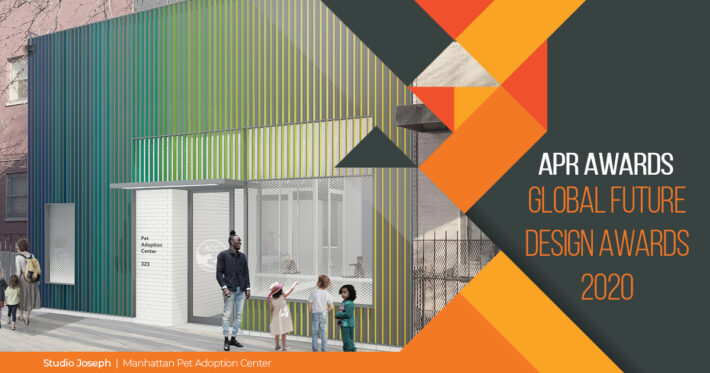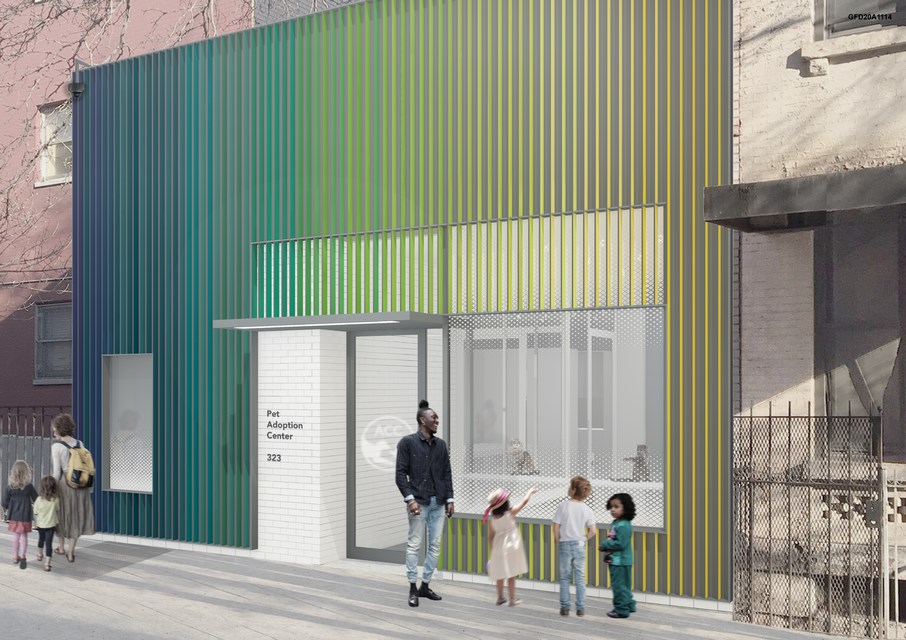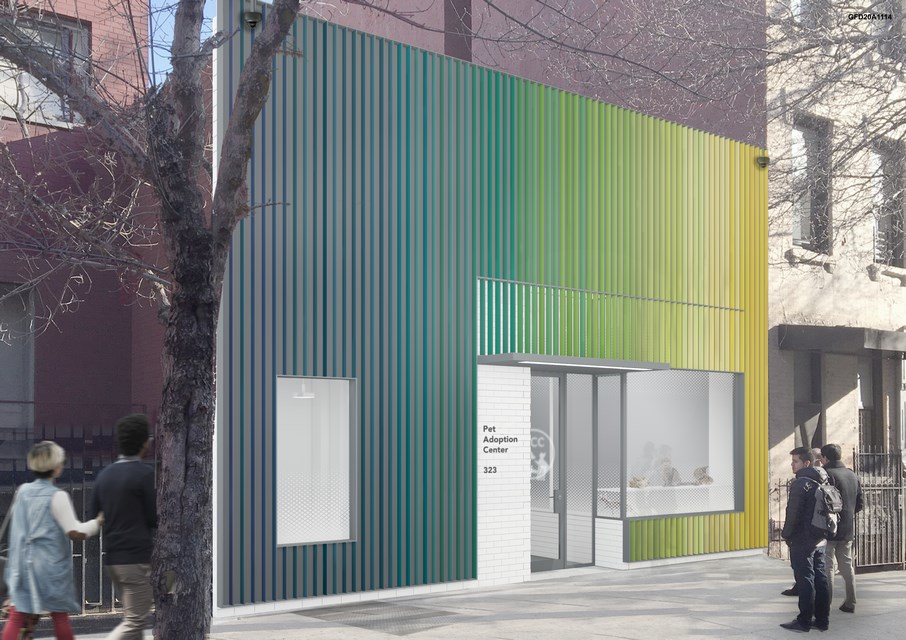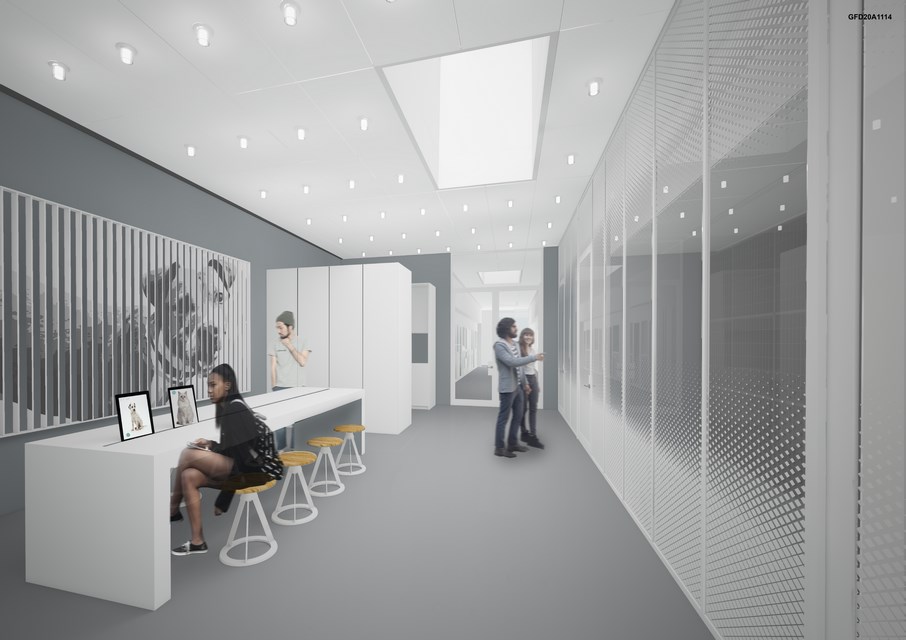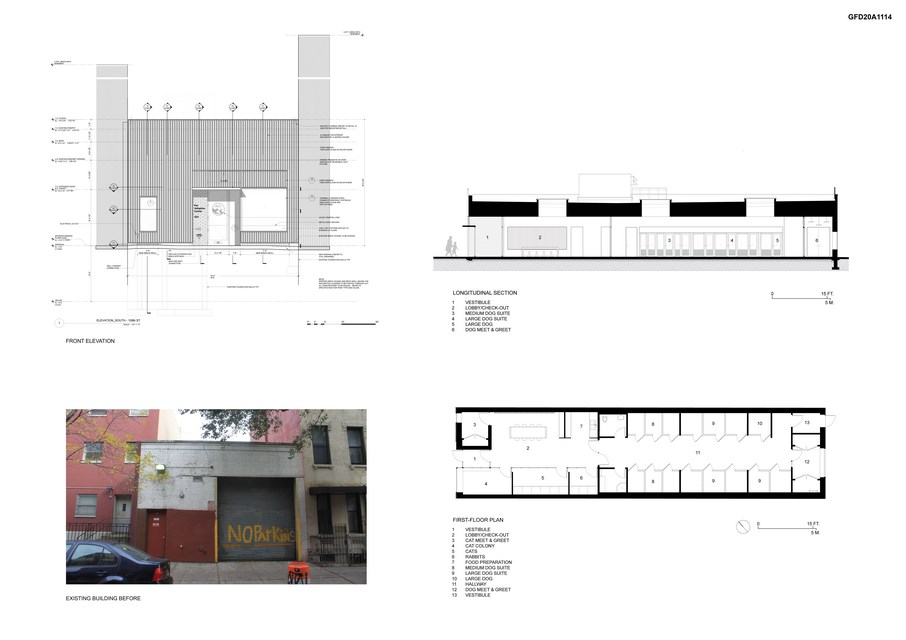Manhattan Pet Adoption Center at 323 East 109th Street, Manhattan, NY
Client: Department of Design and Construction and the Department of Health and Mental Hygiene
Located on East 109th and 110th Streets in East Harlem, the new pet adoption center accommodates dogs, cats, and rabbits in a welcoming environment. While prioritizing that animal health and safety, The Center is a lively and welcoming building that provides a community amenity. Zoning restrictions prohibit structural modifications; therefore, the design maintains the existing façade apertures and roof openings, employing a new rain screen. On 109th street, a large new window replaces an existing garage door providing a twenty-four-hour-view into a cat colony.
Winner- Global Future Design Awards 2020
Firm | Studio Joseph
Architect/Designer | Wendy Evans Joseph
Category | Public Building—Unbuilt
Team | Wendy Evans Joseph, Rafael Herrin-Ferri
Country |United States
Photographer/Copyright | ©Studio Joseph
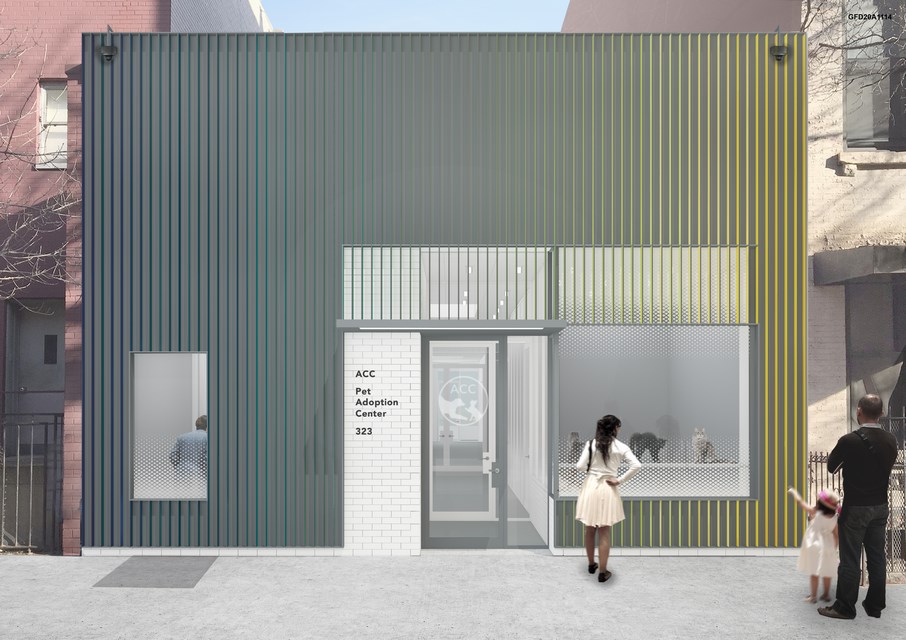
The glass is screened from solar exposure by a fritted gradient on the glazing that is graduated to allow views in and out. The addition of the screen preserves the existing building skin while enlivening the facade with a three-dimensional character and the unexpectedly nuanced addition of color. Hues shift subtly from yellow tones to greens to blues over the perpendicular-facing 3”-deep steel fins. Optically, there is a flicker effect as one walks down the street, while from the opposing side of the street, the color is more subdued against the grey background. The existing brick and any required infill or repairs are painted white. The north façade’s existing garage door aperture is infilled with a large window to bring light to the dog “meet and greet” area and interior dog kennels.
- The design celebrates the active participation of this community facility in a residential neighborhood, encouraging interaction and love for animals.
- Respecting the local context, the façade is both iconic and playful. With the inventive use of color and broad open views into and from the facility, the building is a welcoming part of the streetscape.
- ZONING —The Center is a grandfathered non-conforming use in an R7A residential neighborhood. Therefore, zoning restrictions prohibit any structural changes other than those required to meet code or to repair material failure. The design utilizes an existing façade and skylights and employs a new rain screen façade at the entry on East 109th Street.
- COLOR — To yield a dynamic experience as one approaches from east and west, there are twenty-five distinct colors spread over seventy-five individual powder-coated fins creating a spectrum that flickers from yellow to dark blue.
- SUBTLETY — The mechanical unit is placed to the west side of the skylights and is not visible from eye-level.
- SUSTAINABILITY — LEED Silver is the current goal for the project. Some environmentally forward-thinking features include re-use of existing infrastructure; access to daylight/views for both animals and visitors; new energy efficient skylights; the addition of insulation to walls and roof; and the use of efficient mechanical systems. The Center has recycling procedures, optimizing waste management.
- RESILIENCY — While the building is in an AE flood zone, all mechanical equipment is above grade. No hardening nor other related structural work is required. The building includes a digital monitor that allows for the distribution of information.
- HEALTHY LIVING — The Center supports healthy animals throughout New York City by giving them medical care, food, and shelter as well as access to daylight and exercise. Public interaction with the animals creates positive outcomes for both the animals and their adopting families. There is natural light and views to every space.
EQUITY — The Pet Adoption Center is open to the public without barrier. It is a welcoming environment that enlivens the streetscape and offers views of cats from the sidewalk. This interaction provides a sense of community.


